247 scholarly books by University Press of New England and 23
have author last names that start with B
247 scholarly books by University Press of New England and 23
247 scholarly books by University Press of New England
23 have author last names that start with B have author last names that start with B
23 have author last names that start with B have author last names that start with B
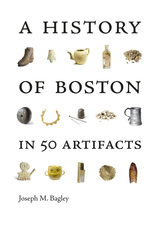
Joseph M. Bagley
University Press of New England
History is right under our feet; we just need to dig a little to find it. Though not the most popular construction project, Boston’s Big Dig has contributed more to our understanding and appreciation of the city’s archaeological history than any other recent event. Joseph M. Bagley, city archaeologist of Boston, uncovers a fascinating hodgepodge of history—from ancient fishing grounds to Jazz Age red-light districts—that will surprise and delight even longtime residents. Each artifact is shown in full color and accompanied by description of the item’s significance to its site location and the larger history of the city. From cannonballs to drinking cups and from ancient spears to chinaware, A History of Boston in 50 Artifacts offers a unique and accessible introduction to Boston’s history and physical culture while revealing the ways objects can offer a tantalizing entrée into our past. Packed with vivid descriptions and art, this lively history of Boston will appeal to all manner of readers, locals and visitors alike.
[more]
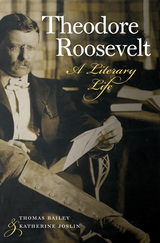
Theodore Roosevelt
A Literary Life
Thomas Bailey
University Press of New England, 2018
Of all the many biographies of Theodore Roosevelt, none has presented the twenty-sixth president as he saw himself: as a man of letters. This fascinating account traces Roosevelt’s lifelong engagement with books and discusses his writings from childhood journals to his final editorial, finished just hours before his death. His most famous book, The Rough Riders—part memoir, part war adventure—barely begins to suggest the dynamism of his literary output. Roosevelt read widely and deeply, and worked tirelessly on his writing. Along with speeches, essays, reviews, and letters, he wrote history, autobiography, and tales of exploration and discovery. In this thoroughly original biography, Roosevelt is revealed at his most vulnerable—and his most human.
[more]
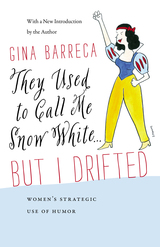
They Used to Call Me Snow White . . . But I Drifted
Women’s Strategic Use of Humor
Gina Barreca
University Press of New England, 2013
Published by Viking in 1991 and issued as a paperback through Penguin Books in 1992, Snow White became an instant classic for both academic and general audiences interested in how women use humor and what others (men) think about funny women. Barreca, who draws on the work of scholars, writers, and comedians to illuminate a sharp critique of the gender-specific aspects of humor, provides laughs and provokes arguments as she shows how humor helps women break rules and occupy center stage. Barreca’s new introduction provides a funny and fierce, up-to-the-minute account of the fate of women’s humor over the past twenty years, mapping what has changed in our culture—and questioning what hasn’t.
[more]
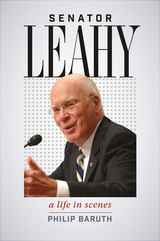
Senator Leahy
A Life in Scenes
Philip Baruth
University Press of New England, 2017
Having vaulted to a position in the United States Senate at the tender age of thirty-four, Patrick Leahy now claims the longest tenure of any member of that institution still serving—and he was third in line for the presidency when the Democrats held control. Few recent American lawmakers have watched history unfold so at such close range; fewer still have influenced it so powerfully. Philip Baruth brings a thriller-like intensity to the most spectacular of those scenes: the 9/11 attack on the US capital, the contentious drafting of the Patriot Act, the ensuing anthrax attacks, and the dramatic 2014 opening of diplomatic ties with Cuba. Throughout, the biography focuses in on Leahy’s meticulous image making, his cultivation of a “Top Cop” persona both in the media and at the ballot box. It is an approach that culminates in simultaneous roles for the lawmaker as chair of the Senate Judiciary Committee and as the tough-talking “distinguished gentleman” in Christopher Nolan’s acclaimed Dark Knight trilogy of Batman films. Leahy’s improbable success, Philip Baruth argues, in the end lies in his ability both to be and to play the top cop not only in post-Watergate Vermont, but in a post-9/11 America viciously divided between the red states and the blue.
[more]

Killer Show
The Station Nightclub Fire, America’s Deadliest Rock Concert
John Barylick
University Press of New England, 2015
On February 20, 2003, the deadliest rock concert in U.S. history took place at a roadhouse called The Station in West Warwick, Rhode Island. That night, in the few minutes it takes to play a hard-rock standard, the fate of many of the unsuspecting nightclub patrons was determined with awful certainty. The blaze was ignited when pyrotechnics set off by Great White, a 1980s heavy-metal band, lit flammable polyurethane “egg crate” foam sound insulation on the club’s walls. In less than 10 minutes, 96 people were dead and 200 more were injured, many catastrophically. The final death toll topped out, three months later, at the eerily unlikely round number of 100. The story of the fire, its causes, and its legal and human aftermath is one of lives put at risk by petty economic decisions—by a band, club owners, promoters, building inspectors, and product manufacturers. Any one of those decisions, made differently, might have averted the tragedy. Together, however, they reached a fatal critical mass. Killer Show is the first comprehensive exploration of the chain of events leading up to the fire, the conflagration itself, and the painstaking search for evidence to hold the guilty to account and obtain justice for the victims. Anyone who has entered an entertainment venue and wondered, “Could I get out of here in a hurry?” will identify with concertgoers at The Station. Fans of disaster nonfiction and forensic thrillers will find ample elements of both genres in Killer Show.
[more]
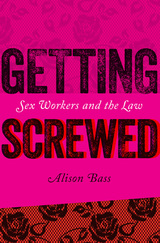
Getting Screwed
Sex Workers and the Law
Alison Bass
University Press of New England, 2015
Alison Bass weaves the true stories of sex workers with the latest research on prostitution into a gripping journalistic account of how women (and some men) navigate a culture that routinely accepts the implicit exchange of sex for money, status, or even a good meal, but imposes heavy penalties on those who make such bargains explicit. Along the way, Bass examines why an increasing number of middle-class white women choose to become sex workers and explores how prostitution has become a thriving industry in the twenty-first-century global economy. Situating her book in American history more broadly, she also discusses the impact of the sexual revolution, the rise of the Nevada brothels, and the growing war on sex trafficking after 9/11. Drawing on recent studies that show lower rates of violence and sexually transmitted diseases, including HIV, in regions where adult prostitution is legal and regulated, Bass makes a powerful case for decriminalizing sex work. Through comparisons of the impact of criminalization vs. decriminalization in other countries, her book offers strategies for making prostitution safer for American sex workers and the communities in which they dwell. This riveting assessment of how U.S. anti-prostitution laws harm the public health and safety of sex workers and other citizens—and affect larger societal attitudes toward women—will interest feminists, sociologists, lawyers, health-care professionals, and policy makers. The book also will appeal to anyone with an interest in American history and our society’s evolving attitudes toward sexuality and marriage.
[more]

Working with Your Woodland
A Landowner’s Guide
Mollie Beattie
University Press of New England, 1993
Packed with information and illustrations, Working with Your Woodland has given woodland owners all the basics necessary for making key decisions since it was first published in 1983. The revised edition reflects the fundamental changes in the way private woodlands are viewed. Today they must be seen as part of the whole earth rather than as owner-managed islands. Few owners are aware of the wide spectrum of compatible management objectives--such as encouragement of wildlife, development for recreation, and enhancement of scenic beauty--that can coexist with the more familiar timber and firewood potential of forested areas. Even fewer understand the purpose, techniques, environmental impacts, economics, or legalities of forest management. This edition provides necessary updating of the technological, environmental, tax, and legal concerns associated with woodland management. Three chapters have been completely rewritten, and there is new information on wetlands management, global warming, acid deposition, and rare or endangered species.
[more]
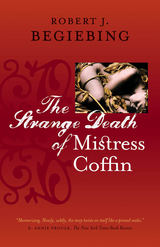
The Strange Death of Mistress Coffin
Robert J. Begiebing
University Press of New England, 2012
New England. 1648. The Piscataqua Settlement. A young woman has been found dead, her violated body stripped naked and thrown in a river. Her husband, a reclusive and learned man, has mysteriously halted his legal proceedings against the most likely suspect, who has disappeared into the wilderness. The settlement’s elders call on a young Englishman, Richard Browne, to discover the truth about what happened. But the more he learns, the more puzzling the crime becomes, and the more he finds himself drawn to the wife of the missing suspect.
[more]
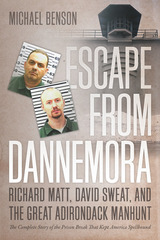
Escape from Dannemora
Richard Matt, David Sweat, and the Great Adirondack Manhunt
Michael Benson
University Press of New England, 2017
It was one of the biggest crime stories of the decade—two deadly killers, desperate and on the run. After months of planning, Ricky Matt and David Sweat cut, chopped, coerced, and connived their way out of a maximum-security prison in the wilderness of upstate New York and managed to elude police for three weeks, sending the region into lockdown and keeping the entire country on edge. The media called it “a bold escape for the ages,” and veteran true-crime writer Michael Benson leads us along the story’s every wild path to dig out a tale of adventure, psychology, sex, and brutality. Escape from Dannemora examines the strange case of Joyce Mitchell, the long-time prison employee who had a sexual relationship with at least one of the killers, and who smuggled them tools and aided in the escape, while they cooked up a plan to kill her husband. In the end, Benson looks closely at conditions at the Clinton Correctional Facility in Dannemora, NY, a crumbling Gothic pile now under investigation for charges of drug trafficking and brutality.
[more]
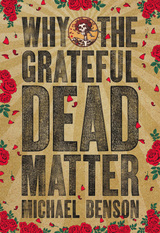
Why the Grateful Dead Matter
Michael Benson
University Press of New England, 2016
In Why the Grateful Dead Matter, veteran writer and lifelong Deadhead Michael Benson argues that the Grateful Dead are not simply a successful rock-and-roll band but a phenomenon central to American culture. He defends the proposition that the Grateful Dead are, in fact, a musical movement as transformative as any -ism in the artistic history of this century and the last. And a lot more fun than most. From the street festivals of Haight-Ashbury to the cross-country acid tests with the Merry Pranksters, and from the sound-and-light show at the Great Pyramid at Giza to the ecstatic outpouring of joy at Soldier Field in the summer of ’15, the Grateful Dead have been at the center of American life, music, and karmic flow for fifty years. In Why the Grateful Dead Matter, Michael Benson brings it all back to life and makes a compelling case for the band’s lasting cultural importance.
[more]

Women's Voices, Women's Lives
Documents in Early American History
Berkin
University Press of New England, 1998

Water Witches
Chris. Bohjalian
University Press of New England, 1995
Vermont is drying up. The normally lush, green countryside is in the grip of the worst drought in years: stunted cornstalks rasp in the hot July breeze, parched vegetable gardens wither and die, the Chittenden River shrinks to a trickle, and the drilling trucks are booked solid as one by one the wells give out. Patience Avery, known nationwide as a gifted "water witch," is having a busy summer, too. Using the tools of the dowser's trade -- divining sticks, metal rods, bobbers, and pendulums -- she can locate, among other things, aquifers deep within the earth. In the midst of this crisis, Scottie Winston lobbies for permits to expand Powder Peak, a local ski area that's his law firm's principal client. As part of the expansion, the resort seeks to draw water for snowmaking from the beleaguered Chittenden, despite opposition from environmentalists who fear that the already weakened river will be damaged beyond repair. What ensues in Chris Bohjalian's fourth novel is a struggle between conservation and development, rugged tradition versus inevitable progress. But it is also a tale of the clash between science and mystery, a chronicle of one man's transformation from cynic to believer. Vivid with the texture of New England ways, alive with characters both quirky and real, informed by the ongoing, real-life battles between environmentalism and economic expansion in Vermont, Water Witches is a story of ineffable forces, tenuous balances, "and perhaps something about our abilities as a people to heal and forgive and to love."
[more]
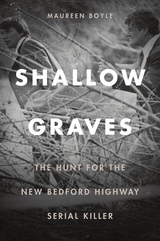
Shallow Graves
The Hunt for the New Bedford Highway Serial Killer
Maureen Boyle
University Press of New England, 2017
Eleven women went missing over the spring and summer of 1988 in New Bedford, Massachusetts, an old fishing port known as the Whaling City, where Moby Dick, Frederick Douglass, textile mills, and heroin-dealing represent just a few of the many threads in the community’s diverse fabric. In Shallow Graves, investigative reporter Maureen Boyle tells the story of a case that has haunted New England for thirty years. The Crimes: The skeletal remains of nine of the women, aged nineteen to thirty-six, were discovered near highways around New Bedford. Some had clearly been strangled, others were so badly decomposed that police were left to guess how they had died. The Victims: All the missing women had led troubled lives of drug addiction, prostitution, and domestic violence, including Nancy Paiva, whose sister was a hard-working employee of the City of New Bedford, and Debra Greenlaw DeMello, who came from a solidly middle-class family but fell into drugs and abusive relationships. In a bizarre twist, Paiva’s clothes were found near DeMello’s body. The Investigators: Massachusetts state troopers Maryann Dill and Jose Gonsalves were the two constants in a complex cast of city, county, and state cops and prosecutors. They knew the victims, the suspects, and the drug-and-crime-riddled streets of New Bedford. They were present at the beginning of the case and they stayed to the bitter end. The Suspects: Kenneth Ponte, a New Bedford attorney and deputy sheriff with an appetite for drugs and prostitutes, landed in the investigative crosshairs from the start. He was indicted by a grand jury in the murder of one of the victims, but those charges were later dropped. Anthony DeGrazia was a loner who appeared to fit the classic serial-killer profile: horrific childhood abuse, charming, charismatic, but prone to bursts of violence. He hunted prostitutes in the city by night and served at a Catholic church by day. Which of these two was the real killer? Or was it someone else entirely? Maureen Boyle first broke the story in 1988 and stayed with it for decades. In Shallow Graves she spins a riveting narrative about the crimes, the victims, the hunt for the killers, and the search for justice, all played out against the backdrop of an increasingly impoverished community beset by drugs and crime. Drawing on more than one hundred interviews, along with police reports, first-person accounts, and field reporting both during the killings and more recently, Shallow Graves brings the reader behind the scenes of the investigation, onto the streets of the city, and into the homes of the families still hoping for answers.
[more]

The French-Canadian Heritage in New England
Gerard J. Brault
University Press of New England, 1986
A comprehensive historical, sociological, and cultural introduction to the sizable Franco-American population in New England.
[more]

The Puritan Experiment
New England Society from Bradford to Edwards
Francis J. Bremer
University Press of New England, 1995
This revised and updated edition of an out-of-print classic once again makes the broad background of Puritanism accessible to students and general readers. Based on a chronology that begins with the Act of Supremacy in 1534 and ends with Jonathan Edwards's death in 1758, Francis J. Bremer's interpretive synthesis of the causes and contexts of the Puritan movement integrates analyses of the religious, political, sociological, economic, and cultural changes wrought by the movement in both Old and New England. From meeting house architecture to Salem witch trials, from relations with Native Americans to the founding of the nation's first colleges, he details with style and grace "a living system of faith" that not only had profound significance for tens of thousands of Englishmen and Americans in the sixteenth and seventeenth centuries, but also affected the course of history in the New World.
[more]
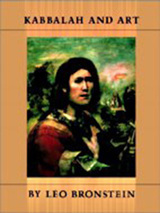
Kabbalah and Art
Léo Bronstein
University Press of New England, 2002
Told as a series of reflections, this study traces links between cultures as diverse as pre-Vedic India and late 19th-century France. An array of unrelated artists are all in fact linked by the Kabbalah and the correlation between art and this mystic Jewish thought.
[more]
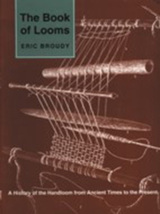
Eric Broudy
University Press of New England
A heavily illustrated classic on the evolution of the handloom.
The handloom—often no more than a bundle of sticks and a few lengths of cordage—has been known to almost all cultures for thousands of years. Eric Broudy places the wide variety of handlooms in their historical context. What influenced their development? How did they travel from one geographic area to another? Were they invented independently by different cultures? How have modern cultures improved on ancient weaving skills and methods? Broudy shows how virtually every culture has woven on handlooms. He highlights the incredible technical achievement of early cultures that created magnificent textiles with the crudest of tools and demonstrates that modern technology has done nothing to surpass their skill or inventiveness.
The handloom—often no more than a bundle of sticks and a few lengths of cordage—has been known to almost all cultures for thousands of years. Eric Broudy places the wide variety of handlooms in their historical context. What influenced their development? How did they travel from one geographic area to another? Were they invented independently by different cultures? How have modern cultures improved on ancient weaving skills and methods? Broudy shows how virtually every culture has woven on handlooms. He highlights the incredible technical achievement of early cultures that created magnificent textiles with the crudest of tools and demonstrates that modern technology has done nothing to surpass their skill or inventiveness.
[more]

Blessings from Beijing
Inside China's Soft-Power War on Tibet
Greg C. Bruno
University Press of New England, 2018
As we approach the sixtieth anniversary of China’s 1959 invasion of Tibet—and the subsequent creation of the Tibetan exile community—the question of the diaspora’s survival looms large. Beijing’s foreign policy has grown more adventurous, particularly since the post-Olympic expansion of 2008. As the pressure mounts, Tibetan refugee families that have made their homes outside China—in the mountains of Nepal, the jungles of India, or the cold concrete houses high above the Dalai Lama’s monastery in Dharamsala—are migrating once again. Blessings from Beijing untangles the chains that tie Tibetans to China and examines the political, social, and economic pressures that are threatening to destroy Tibet’s refugee communities. Journalist Greg Bruno has spent nearly two decades living and working in Tibetan areas. Bruno journeys to the front lines of this fight: to the high Himalayas of Nepal, where Chinese agents pay off Nepali villagers to inform on Tibetan asylum seekers; to the monasteries of southern India, where pro-China monks wish the Dalai Lama dead; to Asia’s meditation caves, where lost souls ponder the fine line between love and war; and to the streets of New York City, where the next generation of refugees strategizes about how to survive China’s relentless assault. But Bruno’s reporting does not stop at well-worn tales of Chinese meddling and political intervention. It goes beyond them—and within them—to explore how China’s strategy is changing the Tibetan exile community forever.
[more]

A Few Planes for China
The Birth of the Flying Tigers
Eugenie Buchan
University Press of New England, 2017
On December 7, 1941, the surprise attack on Pearl Harbor plunged the United States into armed conflict with Japan. In the following months, the Japanese seemed unbeatable as they seized American, British, and European territory across the Pacific: the Philippines, Singapore, Hong Kong, the Dutch East Indies. Nonetheless, in those dark days, the US press began to pick up reports about a group of American mercenaries who were bringing down enemy planes over Burma and western China. The pilots quickly became known as Flying Tigers, and a legend was born. But who were these flyers for hire and how did they wind up in the British colony of Burma? The standard version of events is that in 1940 Colonel Claire Chennault went to Washington and convinced the Roosevelt administration to establish, fund, and equip covert air squadrons that could attack the Japanese in China and possibly bomb Tokyo even before a declaration of war existed between the United States and Japan. That was hardly the case: although present at its creation, Chennault did not create the American Volunteer Group. In A Few Planes for China, Eugenie Buchan draws on wide-ranging new sources to overturn seventy years of received wisdom about the genesis of the Flying Tigers. This strange experiment in airpower was accidental rather than intentional; haphazard decisions and changing threat perceptions shaped its organization and deprived it of resources. In the end it was the British—more than any American in or out of government—who got the Tigers off the ground. On the eve of Pearl Harbor, the most important man behind the Flying Tigers was not Claire Chennault but Winston Churchill.
[more]

Mad Music
Charles Ives, the Nostalgic Rebel
Stephen Budiansky
University Press of New England, 2014
Mad Music is the story of Charles Edward Ives (1874–1954), the innovative American composer who achieved international recognition, but only after he’d stopped making music. While many of his best works received little attention in his lifetime, Ives is now appreciated as perhaps the most important American composer of the twentieth century and father of the diverse lines of Aaron Copland and John Cage. Ives was also a famously wealthy crank who made millions in the insurance business and tried hard to establish a reputation as a crusty New Englander. To Stephen Budiansky, Ives’s life story is a personification of America emerging as a world power: confident and successful, yet unsure of the role of art and culture in a modernizing nation. Though Ives steadfastly remained an outsider in many ways, his life and times inform us of subjects beyond music, including the mystic movement, progressive anticapitalism, and the initial hesitancy of turn-of-the-century-America modernist intellectuals. Deeply researched and elegantly written, this accessible biography tells a uniquely American story of a hidden genius, disparaged as a dilettante, who would shape the history of music in a profound way. Making use of newly published letters—and previously undiscovered archival sources bearing on the longstanding mystery of Ives’s health and creative decline—this absorbing volume provides a definitive look at the life and times of a true American original.
[more]
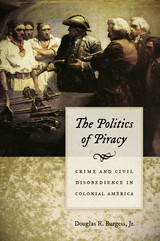
The Politics of Piracy
Crime and Civil Disobedience in Colonial America
Douglas R. Burgess
University Press of New England, 2014
The seventeenth-century war on piracy is remembered as a triumph for the English state and her Atlantic colonies. Yet it was piracy and illicit trade that drove a wedge between them, imperiling the American enterprise and bringing the colonies to the verge of rebellion. In The Politics of Piracy, competing criminalities become a lens to examine England’s legal relationship with America. In contrast to the rough, unlettered stereotypes associated with them, pirates and illicit traders moved easily in colonial society, attaining respectability and even political office. The goods they provided became a cornerstone of colonial trade, transforming port cities from barren outposts into rich and extravagant capitals. This transformation reached the political sphere as well, as colonial governors furnished local mariners with privateering commissions, presided over prize courts that validated stolen wares, and fiercely defended their prerogatives as vice-admirals. By the end of the century, the social and political structures erected in the colonies to protect illicit trade came to represent a new and potent force: nothing less than an independent American legal system. Tensions between Crown and colonies presage, and may predestine, the ultimate dissolution of their relationship in 1776. Exhaustively researched and rich with anecdotes about the pirates and their pursuers, The Politics of Piracy will be a fascinating read for scholars, enthusiasts, and anyone with an interest in the wild and tumultuous world of the Atlantic buccaneers.
[more]
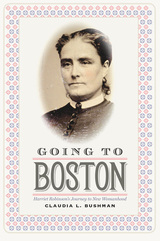
Going to Boston
Harriet Robinson's Journey to New Womanhood
Claudia L. Bushman
University Press of New England, 2017
As a poet, author, and keen observer of life in 1870s Boston, Harriet Robinson played an essential—if occasionally underappreciated—role in the women’s suffrage movement during Boston’s golden age. Robinson flourished after leaving behind her humble roots in the mill town of Lowell, Massachusetts, deciding to spend a year in Boston discovering the culture and politics of America’s Athens. An honest, bright, and perceptive witness, she meets with Emerson and Julia Ward Howe, with whom she organizes the New England Women’s Club, and drinks deeply of the city’s artistic and cultural offerings. Noted historian Claudia L. Bushman proves a wonderful guide as she weaves together Robinson’s journal entries, her own learned commentary, and selections from other nineteenth-century writers to reveal the impact of the industrial revolution and the rise of women’s suffrage as seen through the experience of one articulate, engaged participant. Going to Boston will appeal to readers interested in both the history of Boston and the history of American progress itself.
[more]

“A Good Poor Man’s Wife”
Being a Chronicle of Harriet Hanson Robinson and Her Family in Nineteenth-Century New England
Claudia L. Bushman
University Press of New England, 1998
A shrewd observer of 19th-century America, Harriet Hanson Robinson’s participation in important events and her salty comments, preserved and recorded in the poetry and books she wrote during her lifetime, offer a dramatic account of how one strong-minded woman, who first worked as a textile worker in the industrial town of Lowell, MA, turned to writing and politics to sustain her family after her husband’s early death. Harriet’s personal papers shed light on such topics as labor history, state politics, and the mechanics of writing and publication. Her best-known publications, Loom and Spindle, which deals with early factory life, and Massachusetts in the Woman Suffrage Movement, are often quoted today.
[more]
READERS
Browse our collection.
PUBLISHERS
See BiblioVault's publisher services.
STUDENT SERVICES
Files for college accessibility offices.
UChicago Accessibility Resources
home | accessibility | search | about | contact us
BiblioVault ® 2001 - 2024
The University of Chicago Press









